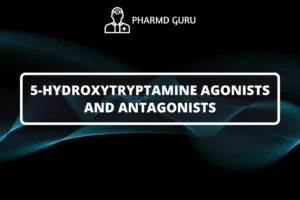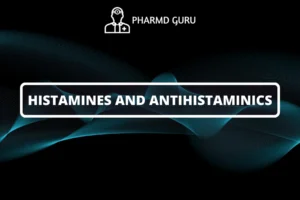Anticonvulsants, also known as antiepileptic drugs (AEDs), are a class of medications used to prevent and manage seizures. They are primarily prescribed for individuals diagnosed with epilepsy, a neurological disorder characterized by recurrent seizures. In this article, we will delve into the pharmacology of anticonvulsants, their mechanisms of action, and their importance in the treatment of epilepsy.
SCROLL DOWN TO THE BOTTOM OF THIS PAGE FOR ACTUAL NOTES.
TABLE OF CONTENTS:
- Introduction
- Types of Anticonvulsants
- Mechanisms of Action
- Indications and Uses
- Side Effects and Considerations
Introduction
Seizures are abnormal electrical discharges in the brain that can lead to various symptoms, including loss of consciousness, convulsions, and altered behavior. Anticonvulsants are designed to stabilize the electrical activity in the brain and reduce the occurrence and severity of seizures. They work by targeting specific mechanisms involved in seizure generation and propagation.
Types of Anticonvulsants
There are several classes of anticonvulsants with different mechanisms of action. Some commonly prescribed anticonvulsants include:
- Sodium Channel Blockers: Drugs such as phenytoin, carbamazepine, and lamotrigine act by blocking voltage-gated sodium channels, which reduces the excitability of neurons and prevents abnormal electrical activity.
- GABA Enhancers: Medications like valproic acid, benzodiazepines (e.g., diazepam), and gabapentin enhance the actions of gamma-aminobutyric acid (GABA), an inhibitory neurotransmitter that helps regulate neuronal activity.
- Calcium Channel Blockers: Certain anticonvulsants, such as ethosuximide and valproic acid, inhibit calcium channels, thereby reducing the influx of calcium ions into neurons and modulating their excitability.
- Glutamate Inhibitors: Topiramate and felbamate are examples of anticonvulsants that inhibit the excitatory neurotransmitter glutamate, preventing excessive neuronal excitation.
- Potassium Channel Modulators: Drugs like levetiracetam and retigabine modulate potassium channels, which helps stabilize the electrical activity of neurons.
Mechanisms of Action
The mechanisms of action of anticonvulsants vary depending on the specific drug. However, they all aim to modulate or stabilize neuronal excitability and prevent the abnormal synchronization of neuronal firing that leads to seizures.
Many anticonvulsants work by targeting ion channels, such as sodium, calcium, and potassium channels, to regulate the flow of ions across neuronal membranes. By doing so, they prevent the excessive excitability or hyperexcitability that can trigger seizures.
Others, like GABA enhancers, act by increasing the inhibitory actions of GABA, which dampens the excitatory signals in the brain and reduces the likelihood of seizure activity.
Indications and Uses
The primary indication for anticonvulsant use is the management of epilepsy and seizure disorders. Anticonvulsants may be prescribed as monotherapy (a single medication) or as adjunctive therapy (combined with other anticonvulsants) to achieve optimal seizure control.
In addition to epilepsy, anticonvulsants may also be used for:
- Mood Stabilization: Some anticonvulsants, such as valproic acid and lamotrigine, are used to stabilize mood and manage bipolar disorder.
- Neuropathic Pain: Certain anticonvulsants, including gabapentin and pregabalin, are effective in relieving neuropathic pain conditions, such as postherpetic neuralgia and diabetic neuropathy.
- Migraine Prophylaxis: Anticonvulsants like topiramate and valproic acid can be used to prevent the occurrence of migraines in individuals with frequent migraines.
Side Effects and Considerations
As with any medication, anticonvulsants can have side effects. Common side effects may include drowsiness, dizziness, nausea, and changes in appetite. Some anticonvulsants may also cause more specific side effects, such as skin rashes, liver toxicity, or mood changes.
It is important for individuals taking anticonvulsants to adhere to the prescribed dosage and follow-up with their healthcare provider regularly. Blood tests may be necessary to monitor the levels of the medication in the body and assess any potential side effects.
ACTUAL NOTES:




